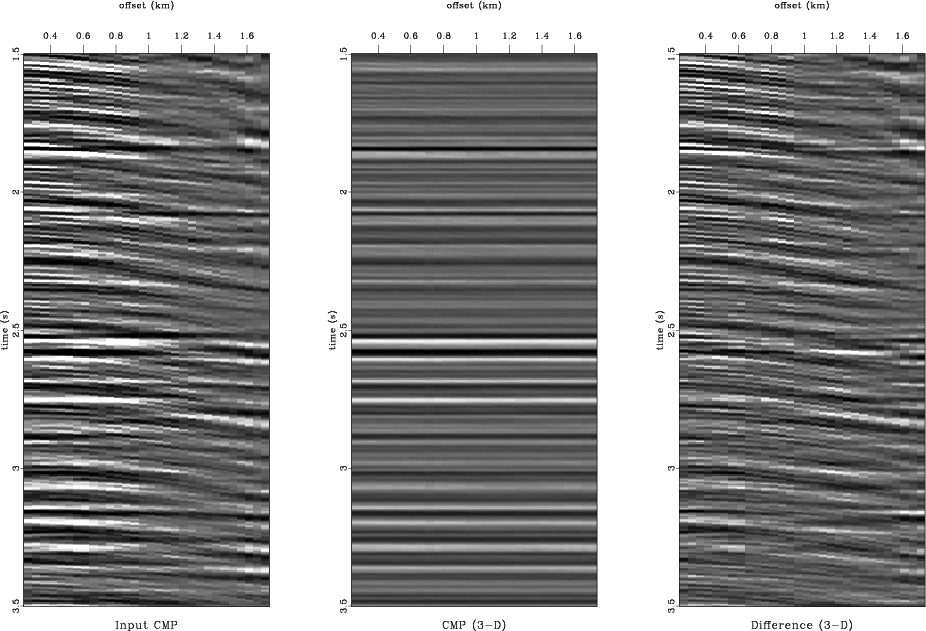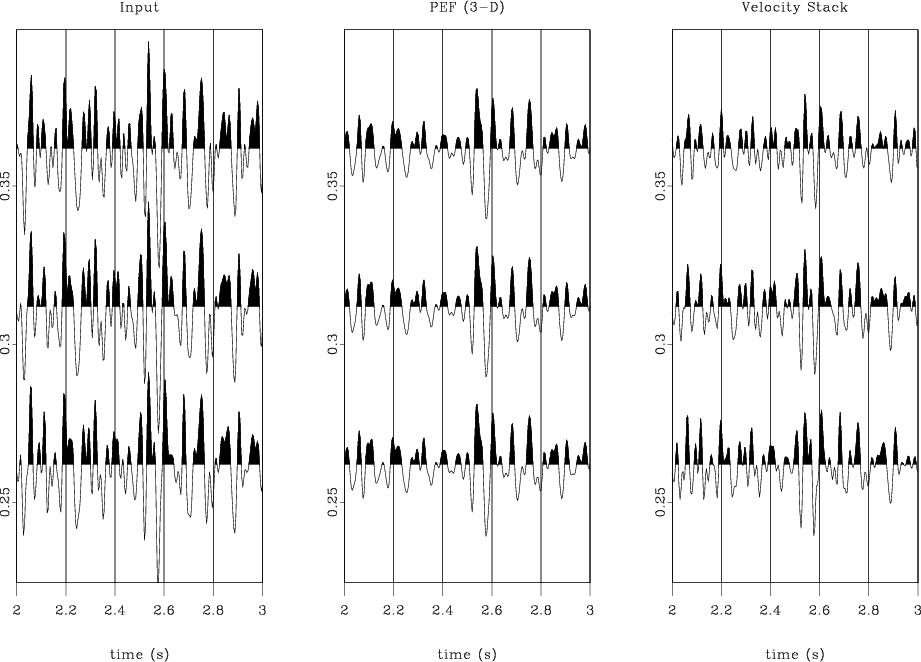|
|
|
|
Multiple suppression using prediction-error filter |
This real CMP gather is extracted from Mobil AVO dataset. The multiple energy is very strong in this dataset. It is not very difficult to locate several high amplitude horizontal events in the original events, as shown in Figure 6. After convolving with the 3-D PEF, these events have been preserved. Most of the multiple energy has been removed. As for the near-offset traces, the signal-to-noise ratio of the PEF approach is also higher than that of the velocity-stacking approach.
Obviously this result is not as convincing as last one. The reason is actually the assumption of the PEF based approach. The PEF based multiple suppression scheme has an assumption over the amplitude of the primary events, that is, the change of amplitude versus offset should be as small as possible. The first example is generated following this assumption strictly. Since this real data has strong AVO effect, the PEF based approach will remove this effect by forcing the amplitude to be invariant along offset. Therefore, some of the primary energy will be lost for this reason. Even for this, the improvement of signal-to-noise ratio in the near offset is still obvious in the near offset, as shown in Figure 7.

|
|---|
|
mo-nmo-tx
Figure 6. A real CMP gather. This is from Mobil's AVO dataset. The high amplitude events in the input section are primary energy. The middle section is the result of the 3-D PEF scheme. Although most of the multiple events have been removed, the AVO effect is also damaged by the filtering. This shows that the PEF approach has an assumption of constant amplitude along the offset. |
|
|

|
|---|
|
mo-near-offset-tx
Figure 7. Comparison of the PEF scheme and velocity-stacking scheme in the near offset. Although the AVO effect has been damaged by the filtering, the signal-to-noise ratio is improved in the near offset. |
|
|
|
|
|
|
Multiple suppression using prediction-error filter |